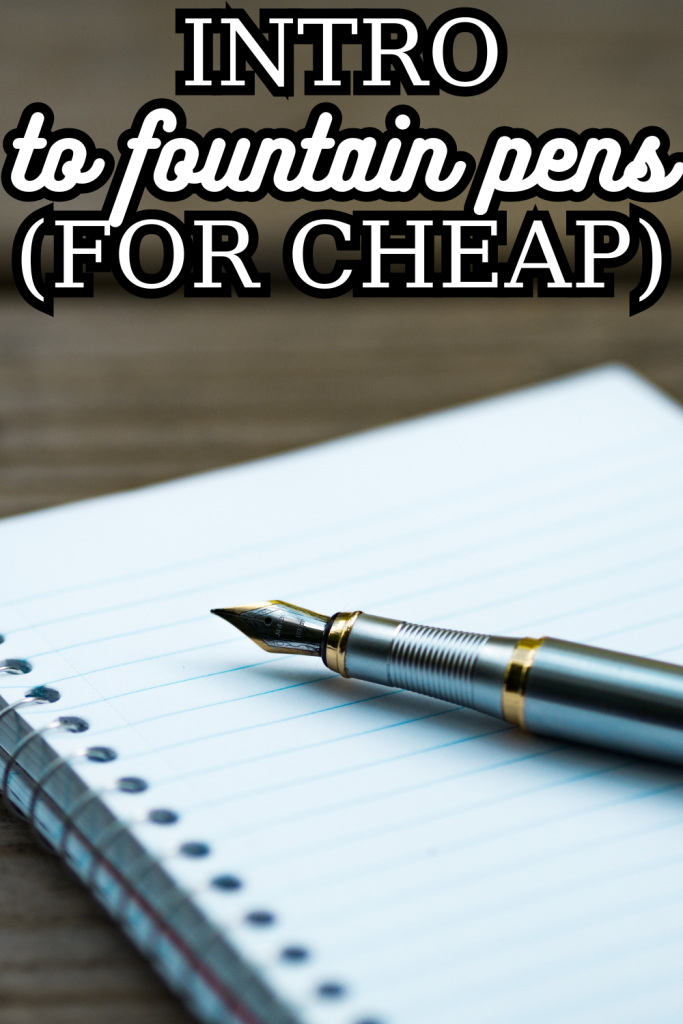Fountain pens? Why, when ballpoint or gel pens are available, would you spend extra money on something as frivolous and anachronistic as a fountain pen? At first glance, it seems silly to spend exorbitant amounts of money on a single pen, but it’s definitely possible to get into the hobby for much less than $50.
If you care about your hand-writing experience, I highly recommend experimenting with fountain pens. Let’s look at what you need to know to get started.
Note: NONE of the links in the following article are affiliate links. I make no advertising revenue on this blog. If you would like to support the blog, you can sign up on Patreon!
Why use Fountain Pens?
- They provide an unbelievably upgraded writing experience. If you’ve ever used a fountain pen, you know that they provide a much better flow and feel deliciously smooth on the paper. If you haven’t, I recommend getting the cheapest possible supplies and doing some experimenting. It’s like painting with a paintbrush versus scribbling with a crayon, even at lower price points.
- You can customize your writing with fun and fancy inks. If you’re sick of plain black or blue ink (which I am not personally, but if you were it would be understandable!) there are a PLETHORA of inks out there, in every color you could imagine. Some even have glitter (called shimmer), or change color where they pool (called sheen).
How to Get Into Fountain Pens— For Cheap!
What to Buy
- The pen. If you don’t want to make a large monetary commitment, you can get a fountain pen for less than $10, like from the Jinhao brand. The upgrade in writing experience is immediate, even with cheap pens. If you already know you like fountain pens, I have heard great things about the Lamy Safari, which is less than $30 and comes in an array of colors.
- Ink. If you want to experiment with many different inks, you can pick out samples or get random ones from Goulet. My favorite ink for everyday use is Parker Quink in black. It is quick-drying so it’s less likely to smudge during normal writing.
- Optional: converter. Depending on the pen you buy, you may need a separate piece to hold the ink inside the pen. The Jinhao brand seems to come with them, but if you get another pen, you should bear in mind that you might need it. Do your research on the model of pen you want to get!
- Optional: blunt syringes. Depending on the pen you get, you may need to fill the converter or the ink chamber with a blunt syringe. Getting syringes also allows you to use any ink samples you may get, because you probably won’t be able to dunk your whole pen in the small vial to fill it up.
Let me know if you end up experimenting with fountain pens and how it goes! Have fun writing!

